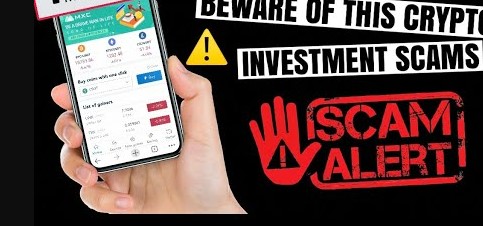CoinList Ro: 10 Warning Signs of a Crypto Scam
1. Introduction: Familiar Name, Shadowy Reality
At first glance, CoinList Ro might sound like the trusted platform CoinList designed for token sales and crypto capital raises. But this “Ro” variant isn’t from the reputable outfit—it’s a cleverly disguised scam. Designed to exploit trust in the CoinList brand, CoinList Ro preyed on crypto enthusiasm with promises of lucrative returns, only to ensnare victims in a trap of escalating demands and vanished funds.
2. Mimicry and Deception: Anatomy of an Impersonator
CoinList Ro employed a classic identity theft technique: borrowing legitimacy from a well-known platform. It imitated CoinList’s design and branding, capturing attention and bypassing initial skepticism. The domain name—”CoinList Ro”—was nearly identical to the real site, making it seem like a legitimate regional or experimental offshoot.
This mimicry lured users in under the guise of credible crypto investment opportunities, when in truth, it was a lure for their money.
3. The Victim’s Journey: A Pattern of Promised Gains and Payment Traps
One user recounted the mechanism of deception with chilling clarity:
“I have a friend … he invested about $9K and is up to $27K—but they won’t release the funds … he’s required to show $3K more in funds for them to release the gains … this is a scam site.” Reddit
Here’s how the scam typically unfolded:
-
Initial Deposit: Victims were enticed to make a modest investment under the pretense of crypto trading or investment gains.
-
Fake Gains: The platform displayed inflated account balances—making users feel their money was growing rapidly.
-
Withdrawal Denial: When victims attempted to withdraw, they were told they lacked sufficient “credit” or liquidity.
-
Coerced Payments: To release funds, the site demanded additional deposits—framed as “taxes,” “verification fees,” or “margin requirements.”
-
Escalating Demands: Even after further payment, withdrawals remained blocked, prompting pleas for more money.
-
Vanishing Funds: Eventually, the platform disappeared or became unresponsive, leaving victims empty-handed.
4. A Short Life and Recycled Scheme
CoinList Ro’s lifespan was brief—a telltale red flag. One user noted:
-
The domain had been registered less than a month prior.
-
The site’s design mirrored known fraudulent exchanges, such as “Hut8 international cryptocurrency exchange,” suggesting the fraudsters reused templates across multiple scams. Reddit
This cycle of quick launch, victim entrapment, and disappearance is a hallmark of scam networks aiming to stay one step ahead of detection.
5. Psychological Manipulation: Why It Worked on Victims
Several psychological levers were at play:
-
Brand Trust: By using the well-known “CoinList” name, the scam surfaced doubts about legitimacy—and many users dismissed suspicion outright.
-
Greed and Fear of Missing Out: Fake gains triggered FOMO, encouraging victims to act quickly.
-
Sunk Cost Fallacy: After depositing funds and seeing “returns,” victims hesitated to pull out—hoping they could salvage or grow their investment.
-
Authority Illusion: The sophisticated interface and impersonated branding enhanced credibility.
6. Voices from the Web: Real Experiences, Real Loss
On a crypto scams forum, the following blunt verdicts emerged:
“This is a scam, don’t deposit any more.”
“100% scam. The money you already had in there is gone.” Reddit
Such comments spotlight the devastating and abrupt impact on those drawn in—often leaving precious funds stranded and awareness painfully elevated too late.
7. Scam Model Breakdown: A Classic Playbook
| Stage | Tactics Deployed | Victim Impact |
|---|---|---|
| Branding Mimicry | Imitates a trusted platform | Lowers vigilance |
| Initial Deposit | Small amounts accepted | Hook established |
| Fake Balance Growth | Inflated “returns” shown | Encourages false confidence |
| Withdrawal Block | “Credit insufficient” excuse | Prevents exit |
| Additional Payment Push | Demands for more funds | Escalating financial involvement |
| Disappearance | Site vanishes or ignores support | Victims lose everything |
8. The Broader Context: Why Fraudsters Target Brand Trust
Scammers frequently piggyback on trusted brands—banks, exchanges, services—to exploit perceived reliability. CoinList Ro is part of that trend, blending recognizable design with high-stakes deception.
This tactic works exceptionally well when users rely on visual cues and domain names without deeper verification—making vigilance even more crucial.
9. Emotional Fallout: Trust, Money, and Self-Perception
Beyond the financial loss, victims often endure:
-
Betrayal: Trust shattered by a platform that seemed credible.
-
Self-Blame: Feeling foolish for falling for the scam, especially if shared with friends or networks.
-
Erosion of Trust in Crypto: A setback for legitimate platforms as the scam sows broad distrust.
10. Final Thoughts: Harsh Lessons from CoinList Ro
CoinList Ro’s operation embodies a sophisticated, fast-moving scam that weaponizes familiarity. It teaches a hard lesson:
-
Even trusted brand names can be weaponized against users.
-
Fake platforms evolve quickly—what works for one scam can be repurposed under a new domain.
-
Emotional manipulation—appealing to greed, trust, and urgency—is central to these schemes.
While no recovery advice is included here, awareness is essential. CoinList Ro’s story is not just a cautionary tale—it is a call to action for scrutiny and informed skepticism in the crypto world.
Report CoinList Ro and Recover Your Funds
If you have lost money to CoinList Ro , it’s important to take action immediately. Report the scam to Jayen-consulting.com, a trusted platform that assists victims in recovering their stolen funds. The sooner you act, the better your chances of reclaiming your money and holding these fraudsters accountable.
Scam brokers like CoinList Ro continue to target unsuspecting investors. Stay informed, avoid unregulated platforms, and report scams to protect yourself and others from financial fraud.
Stay smart. Stay safe.






